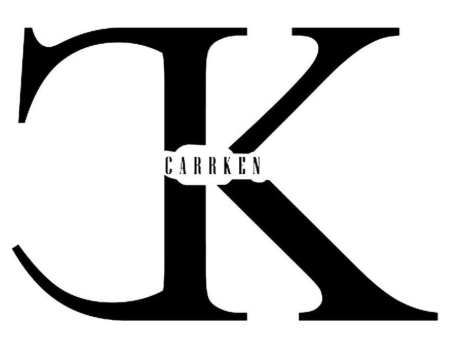- in United States
- within International Law, Environment and Antitrust/Competition Law topic(s)
In this article, we discuss a recent European Union ("EU") trade mark opposition judgment, the case of Calvin Klein Trademark Trust v Wu He, where the decision was handed down on 28 April 2025.
The case concisely
An individual, a Chinese citizen called Wu He, filed an EU trade mark application for a logo mark. The application covered goods in class 9 - think trendy optical stuff like spectacles, sunglasses, eyeglass chains and eyeglass cords - as well as class 25, which covers clothing.
Below is an example of the offending logo, which can best be described as a stylised letter C that is both reversed and attached to a stylised letter K, forming a single whole (think of two people sitting back-to-back). Although it isn't very clear, the word Carrken appears in the trade mark in very small script.

Yes, we know what you're thinking...this trade mark looks/sounds suspiciously like a trade mark that you've encountered before!
The trade mark opposition
The Calvin Klein Trademark Trust did what was expected of it – it filed an opposition to the Wu He trade mark application. The opposition was based on the well-known CK logo of Calvin Klein. Here it is:

The findings of the Opposition Division of the European Union's Intellectual Property Office (EUIPO)
The EUIPO Opposition Division went through the motions, and below follows a discussion of some of the Opposition Division's observations and findings:
- The relevant public is hip and happening
The EUIPO Opposition Division suggested that in a case like this, the relevant public might well be quite sharp, maybe even cool - it was clearly still thinking about that fancy eyewear and related stuff!
- The relevant public is also well-informed
The EUIPO Opposition Division went on to suggest that the relevant public would certainly be 'reasonably well informed and reasonably observant and circumspect'. This somewhat impressive demographic is, according to the Opposition Division, composed of 'the general public and professionals, whose degree of attention may vary from average to high'.
Good, upstanding people, in other words! People you can trust!
- The earlier trade mark
The Opposition Division made the finding that the 'earlier mark' – the CK logo - has 'a normal degree of inherent distinctiveness'.
The similarities between the trade marks
The Opposition Division discussed the similarities between the trade marks at a level of detail that many readers (in particular, South African readers) may find extraordinary. The judgment doesn't make for particularly easy reading, so what we've decided to do is simply summarise some of the major points that were made by the tribunal, see below:
- The letters C and K – the Opposition Division said that the 'signs coincide in the combination of the letters C and K'.
- Typeface – the trade marks are 'depicted in practically the same typeface, with serifs and the same thickness'.
- The visual similarity between the trade marks is 'reinforced by the fact that the letter K in both signs is almost identical'.
- Coincidence – there is a 'strong point of coincidence between the signs, further contributing to the similar visual impression'.
- Average degree of similarity - the 'signs are visually similar to an average degree and aurally identical'.
- Let's remain aural - the 'relevant public will refer to the signs by pronouncing the letters CK, which are the letters that both the earlier mark and the contested sign consist of'.
- Conceptual similarities – the two trade marks are 'not conceptually comparable'.
The ruling
The Opposition Division found that there was a likelihood of confusion between the trade marks, which includes a likelihood of association. It said this:
'Considering all the above, the Opposition Division finds that there is a likelihood of confusion, which includes likelihood of association on the part of the public perceiving the letters 'CK' in the contested sign...therefore the opposition is well-founded... it follows that the contested sign must be rejected for all the contested goods.'
The content of this article is intended to provide a general guide to the subject matter. Specialist advice should be sought about your specific circumstances.


